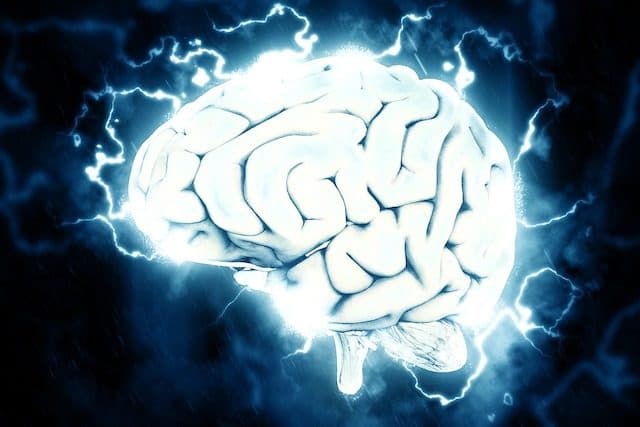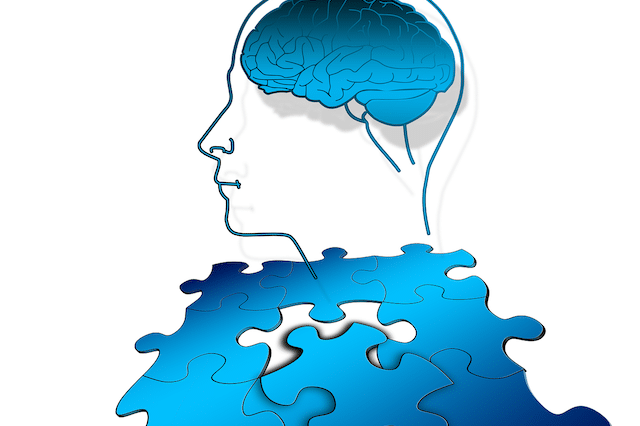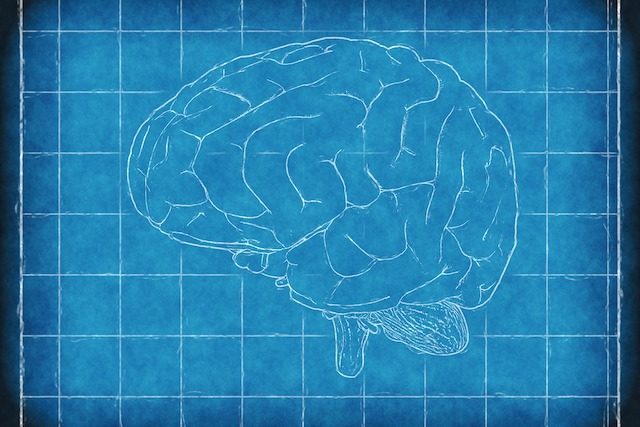The human brain is one of the most complex organs in the human body, as well as the most poorly-understood. While we’ve come a long way in decoding its largely mysterious workings in the past few years – thanks to unprecedented advances in fields like neuroscience – there’s a lot we still don’t know about it.
From consciousness to memory to disorders that shouldn’t exist, some of our brain’s most basic and everyday functions are still baffling mysteries to science.
10. Nature Vs. Nurture

The debate around whether we’re entirely products of our environment or if biology and genetics ultimately decide everything about our lives – or the ‘nature vs. nurture’ debate has been going on for a while. The general consensus has traditionally fallen somewhere in the middle, i.e., both nature and nurture play an equally important role, and that it’s impossible to separate the impact of one from the other.
Mounting research over the last few years, though, suggests that nature may have much more of an impact on how our brain functions than environmental factors. One study found that genetic differences account for as much as 49% of all traits, including intelligence, mental illness, health and personality. Environmental factors play a crucial role, too, as they account for the other half, though their effect was found to be largely random.
9. Brain Freeze

Technically known as a ‘cold-stimulus headache’, a brain freeze is something we’ve all experienced at least once. It’s usually harmless and short in duration, often occurring immediately after you eat something really cold.
If we delve into its biological or evolutionary roots, however, it’s not clear why it happens at all. No one knows what happens inside the brain during a brain freeze, even if it feels quite painful and real for that one moment.
One theory says that it’s due to the sudden rise in blood flow to the brain caused by eating something cold. As the increased blood flow creates pressure, it’s interpreted as a kind of pain by the brain, causing what we know as a brain freeze. While that may explain how the mechanism works, it doesn’t explain why the brain sees that as pain at all, instead of any other emotion.
8. Visual Hallucinations

Charles Bonnet Syndrome – or CBS – is named after the Swiss clinician that first studied it in 1760, and is one of the most fascinating and mysterious parts of how our brain functions. Colloquially known as visual hallucinations or phantom visions, the condition is fairly rare, only affecting a small percentage of people that have lost their vision due to specific eye conditions like cataract, glaucoma or diabetes.
It’s exactly how it sounds: blind people visually hallucinating after losing their eyesight, even if that sounds impossible to most of us. It’s not just basic hallucinations, either. CBS patients have reported seeing complex, unusual visuals of a wide variety of things, such as distorted faces, unclear figures wearing exotic, colorful dresses, and miniature soldiers marching.
While it’s definitely one of the most fascinating – as well as debilitating – ways the brain can malfunction, we still don’t know what causes it. There doesn’t seem to be any common factor among those that experience, except the fact that all of them lost their eyesight at some point in their lives instead of being born blind.
7. Perception

Perception is our ability to interpret the world around us based on the stimuli we receive from all of our senses. It’s how the brain makes a coherent, sensible image of the world around us, which is consistently modified and updated in real time based on new cues and signals.
While it doesn’t sound like a rare ability, the fact that we can do it at all is quite astounding. Think about it, we’re bombarded with countless, incoherent pieces of information from a variety of sources every day. Yet, the brain has no problem processing all that information day in and out.
It is, after all, one of neuroscience’s biggest mysteries. We don’t even know exactly how the brain receives all those different types of stimuli, let alone how it makes sense of them. Moreover, we don’t know if perception is entirely subconscious, or if we have some control over it.
6. Neural Coding

Whenever we do anything – get up to walk, use our phone, drive, etc. – our brain reaches for the necessary information it has on that activity. Based on what it knows, it then sends signals to the relevant muscles and parts of the body to complete the task. It knows how to do that because of an underlying set of rules that regulate how neurons behave – the neural code.
As of now, we know very little about how – or even where – neurons encode that information, though we know that it’s not one place. More and more studies are proving that even for simple, seemingly-linear tasks – like picking up an object – multiple parts of the brain are involved. As an example, the Broca’s area of the brain is responsible for speech, though when we speak, many other parts of the brain that should be unrelated to the Broca’s area have been found to be active, too. In fact, there seems to be no discernible pattern to how and where information is stored in the brain at all.
5. Memory

In the past few decades, we’ve come a long way in our understanding of how the brain forms memories. We now know that it’s less like a hard drive – which is how most of us imagine it – and more like a collection of synapses , or junctions. between the various nerve cells in the brain’s neural network. Simply speaking, memory is a product of the connections between the nerve cells, and has little to do with the nerve cells themselves. That’s why they tend to get distorted and less accurate with time, as those connections keep getting weaker and less accurate.
While we understand how it works, we’ve still not been able to physically map the memory-formation and retrieval process inside the brain, and there are still huge gaps in our understanding of all the mechanisms involved.
Moreover, while memory formation is now much better understood than even a few years ago, memory retrieval is still entirely mysterious to science. We simply do not know how the brain reaches out to its various parts whenever it has to recollect a memory, or exactly which parts are even involved in the process.
4. Dreams

Almost everyone knows what dreams are, even if their frequency and content depends on a lot of factors like age, stress, sleep timings etc. What no one knows, though, is what happens inside the brain when we dream, as they remain one of the more mysterious and commonly-experienced brain phenomena we know of.
According to one study, many parts of the brain are involved in dreaming instead of just one – like the parts responsible for memory, emotions and reward – though it doesn’t explain how exactly they come together to make dreams. Moreover, it’s not clear when we dream, either. It was earlier believed that we only dream during the REM state of the sleep cycle, though some recent research has found that we can dream during non-REM sleep, too.
3. Neurodegeneration

Neurodegeneration refers to the specific kind of deterioration of nerve cells seen in diseases like Alzheimer’s and Parkinson’s. There are hundreds of neurodegenerative diseases we know of, though only a few of them – like Alzheimer’s, Parkinson’s and Huntington’s – have ever been studied.
There are still many questions around exactly what causes neurodegenerative diseases. The only criteria seems to be old age, though that’s about it. Other than age, patients of neurodegenerative disorders seem to have no discernible connection at all. That makes it almost impossible to predict – and hence effectively treat – some of the most debilitating mental disorders known to medicine. We’re not sure what happens in the brain once these diseases take hold and progress, either, or exactly how they attack and kill neurons over time.
2. Tracking Time

Our brain is almost always keeping track of time, and it’s quite good at it, too. You may have already heard about the circadian clock that helps various organs regulate their functions in tune with the time of the day, though it goes way beyond that. Time tracking is required for even the most mundane of everyday tasks, like driving, speaking and listening to music.
While we know that the brain is capable of doing this, we’re not sure how. Unlike spatial awareness, the regions of the brain responsible for keeping time remain elusive. We’ve traditionally believed that a master clock dictates all the timekeeping processes of the body, though a growing number of scientists now believe that multiple regions of the brain may have their own unique time monitors, utilizing different parts of the brain at different times depending on their function. Timekeeping while retrieving a memory, as an example, would require a completely different set of processes in the brain than tracking the time to catching a ball.
1. Consciousness

The question of consciousness is the question of the meaning of life itself. Many experts throughout history – from ancient philosophers to modern-day neuroscientists – have tried to understand the connection between the physical bits and pieces that make up the brain and the subjective, unique experiences we have because of them, though to little success.
Consciousness is one of science’s – as well as philosophy’s – greatest mysteries, and one that could solve some of our longest-standing medical problems, like the above-mentioned neurodegenerative disorders. We still don’t know exactly which regions of the brain are responsible for consciousness, or even if there’s a physical aspect to it. We know of patients with severe spinal cord damage that have lost almost all of their senses and brain activity, though they’re still conscious and experience the world in some form.